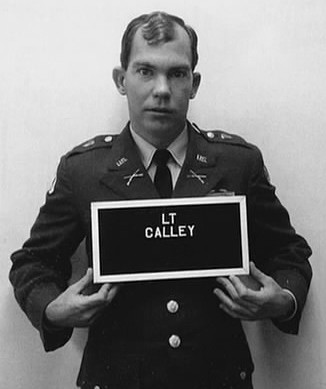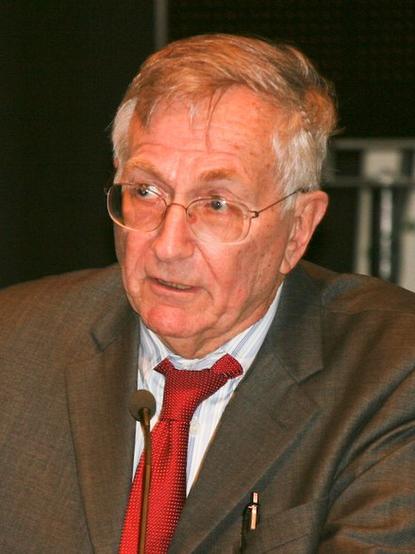WATCH: Joe Lauria — Trump Defies Rational Analysis
https://consortiumnews.com/2025/06/08/watch-joe-lauria-trump-defies-rational-analysis/
Donald Trump is somebody very hard to define and to describe because we’ve never seen anything like him, the editor of Consortium News told Turkish journalist Tunç Akkoç’.   TRANSCRIPT Tunç Akkoç’: Hello everyone. Today we have a very special…
#Politics #AmericanEmpire #Analysis #Commentary #Disinformation #FreeSpeech #Gaza #History #Intelligence #Israel #JoeLauria #Media #MiddleEast #Militarism #Nato #PressFreedom #Russia #Turkey #U.s. #U.s.Congress #Ukraine #Vietnam #AzovBattalion #BarackObama #BorisYeltsin #ChelseaManning #Cia #DanielEllsberg #DavidBenGurion #DonaldTrump #EdwardSnowden #Ergenekon #Fbi #FethullahGülen #HarryTruman #HillaryClinton #Jfk #JfkAssassination #JohnBolton #JulianAssange #KeithKellogg #MarcoRubio #MikePompeo #MyLai #NewYorkCity #Osce #OttomanEmpire #PentagonPapers #RichardNixon #SeymourHersh #SykesPicot #TunçAkkoç’ #ViktorYanukovych #VladimirPutin #Watergate #YaseminCongar
#MyLai
WATCH: Oliver Stone — ‘They Always Kill the Socrates’
https://consortiumnews.com/2025/05/25/watch-oliver-stone-they-always-kill-the-socrates/
American film director Oliver Stone addressed the Znanie Youth Forum in Moscow ahead of the 80th anniversary of Victory Day for the Allies in World War II. American film director Oliver Stone addressed the Znanie Youth Forum in Moscow ahead…
#Politics #AmericanEmpire #Analysis #Arts #Censorship #Commentary #Film #FreeSpeech #History #Russia #U.s. #Ukraine #Vietnam #AbrahamLincoln #AlexanderTheGreat #AndreiTarkovsky #BillClinton #DonaldTrump #Euromaidan #FidelCastro #FranklinD.Roosevelt #Gen.WilliamPeers #HugoChavez #IgorLopatonok #JoeBiden #JohnF.Kennedy #MartinLutherKingJr. #MyLai #OliverStone #RichardNixon #Socrates #StevenSpielberg #VladimirPutin #WilliamCalley #Youtube
Kafr Qana impallidisce al confronto per il livello di barbarie.
Nel primo caso, si potrebbe credere che Israele abbia ucciso inavvertitamente decine di persone innocenti; a Tel al-Sultan, invece, è evidente l'intento doloso e criminale di farlo.
Quello di Tel al-Sultan è la #MyLai israeliana.
Ma mentre My Lai ha segnato un cambiamento epocale nell'opinione pubblica americana contro la guerra del #Vietnam, Tel al-Sultan non ha interessato la maggior parte dei media israeliani.
L'America militarista e sottoposta al lavaggio del cervello di allora era in subbuglio; l'Israele di oggi ha chiuso gli occhi su Tel al-Sultan.
Questi massacri non solo non hanno suscitato alcun cambiamento nell'opinione pubblica né hanno portato a un arresto della guerra, ma sembrano incoraggiare altri massacri. ⬇️6
#usa #vietnam : #krieg / #usmilitär / #massaker / #mylai / #zivilekriegsopfer / #justiz / #verurteilung / #audio
„Am 31. März 1971 wird William Calley, Leutnant in der US-Armee zu lebenslanger Haft verurteilt. Dies für die Ermordung ovn Zivilpersonen im Vietnamkrieg, beim berüchtigen Massaker von My Lai. William Calley blieb aber der einzige, der je dafür verurteilt wurde.”
WATCH: A Time of Growing Repression
https://consortiumnews.com/2025/03/30/watch-a-time-of-growing-repression/
CN Editor Joe Lauria addressed a meeting held on the eve of an appeal hearing for Australian whistleblower David McBride, highlighting the growing repression in contrast to 50 years ago. On the night before the appeal hearing of Australian whistleblower…
#Politics #Analysis #Australia #Commentary #Iraq #JulianAssange #Legal #Media #Militarism #Pentagon #PressFreedom #U.s. #Vietnam #AntoinetteLattouf #Baghdad #CollateralMurder #DavidMcbride #JoeLauria #MaryKostakidis #MyLai #SeymourHersh
March 29, 1971 - U.S. Army Lieutenant William Calley was found guilty at a court martial for his part in the My Lai massacre which claimed the lives of hundreds of South Vietnamese civilians. Convicted for the premeditated murder of at least 22 Vietnamese civilians, he was sentenced to three years under house arrest.
#MyLai
March 16, 1968 - U.S. troops in South Vietnam killed 504 Vietnamese civilians at My Lai, a pair of hamlets in the coastal lowlands of Quang Ngai Province. The victims were from 247 families, completely eliminating 24 of them, three generations with no survivors. Among the dead were 182 women, 17 of them pregnant, and 173 children, including 56 infants, and 60 older men.
Lt. William L. Calley, Jr. commanded the men of Charlie Company, First Battalion, America l Division, and was the only one tried out of 80 involved in what is called the My Lai Massacre. The Army, including a young Major Colin Powell, at first tried to cover it up and the media resisted reporting it.
Some of Calley's soldiers refused to participate, but only 24-year-old helicopter pilot Hugh Thompson and his crew stopped it by putting themselves between the villagers and the troops pursuing them.
Chief My Lai prosecutor William Eckhardt described how Thompson responded to what he found when he put his helicopter down: "[Thompson] put his guns on Americans, said he would shoot them if they shot another Vietnamese, had his people wade in the ditch in gore to their knees, to their hips, took out children, took them to the hospital...flew back [to headquarters], standing in front of people, tears rolling down his cheeks, pounding on the table saying, 'Notice, notice, notice'...then had the courage to testify time after time after time."
16 mars 1968 - Viet Nam - Crime de guerre des USA à My Lai
Entre officiellement presque 350 et plus de 500 meurtres gratuits de civils de 1 à 82 ans, femmes, enfants, vieillards, par la 23e division d'infanterie de l'armée américaine commandée par le lieutenant William Calley devenu héros de l'extrême-droite américaine après ce haut fait d'armes.
Ceci pour rappeler que les américains sont aussi sanguinaires et terroristes que les israéliens, les iraniens, les européens, les chinois, les phillipins, les japonais, les chiliens, les centre-africains, les russes, les ... quand leur extrême-droite est laissée libre de toute entrave.
RIEN n'a changé, tout indique que Trump va recommencer, comme les chinois et comme les russes qui n'attendent qu'un signe pour lancer la curée frénétique.
Ik bezocht My Lai in Vietnam. In 1968 vond hier tijdens de Vietnamoorlog een verschrikkelijk bloedbad plaats. Het bloedbad van My Lai is het beschamendste hoofdstuk van de Amerikaanse inmenging in Vietnam. Wil je meer weten wat er in 1968 in My Lai is gebeurd, lees dan mijn website. 👇
“I still believe that if your aim is to change the world, journalism is a more immediate short-term weapon”*…
In the most recent issue of his “No Mercy/No Malice” newsletter, “The Podcast Election,” Scott Galloway makes the case that “in each election the victor is likely to be whoever best weaponizes an emerging medium.” John Grinspan (curator of political history at the Smithsonian Institution) offers a timely historical example: Long before anyone was accused of being “woke,” the Wide Awakes used new news technology to rapidly construct a national movement…
… when I discuss the deep history of political division in our country, someone in the audience always asserts that we can’t possibly compare past divisions to the present, because our media landscape is doing unprecedented harm, unlike anything seen in the past.
I’m always struck by people’s belief in a placid media landscape in the past, a time of calm before the internet blew everything up. In fact, the most divided period in the history of U.S. democracy — the mid-1800s — coincided with a sudden boom in new communications technologies, confrontational political influencers, widespread disinformation, and nasty fights over free speech. This media landscape helped bring about the Civil War.
The point is not that 21st century media is like the 19th century’s, but that the past was hardly full of the upstanding, rational, nonpartisan journalists many like to believe it was. And at this era’s center, in the campaign that actually led to the war, was a huge, strange, forgotten movement — the Wide Awakes — born from this media landscape and fought out in the newspapers, polling places and, ultimately, battlefields of the nation.
Newspapers had been around for centuries by the 1800s, but as American rates of literacy rose, millions of ordinary citizens became daily news junkies. The number of papers jumped from a few publications in 1800 to 4,000 brawling rags by 1860, collectively printing hundreds of millions of pages each year. They ranged from the snarky, immensely popular New York Herald and the blood-drenched true crime reports in the National Police Gazette to the high-minded abolitionism of The Liberator.
Nearly everyone literate devoured them — from wealthy elites to schoolgirls to enslaved people technically banned from reading. Newspapers published scandals and rumors, riling mobs and sparking frequent attacks on editors — often by other editors. Well into the 20th century, communities were still pulling newspaper presses out of local rivers, having been hurled there by angry mobs.
Ninety-five percent of American newspapers had explicit political affiliations. Many were directly bankrolled by political parties. There was no concept of journalistic independence and nonpartisanship until the turn of the 20th century.
These partisan presses, not the government, even printed the election ballots. Readers voted by cutting ballots from their pages and bringing them to the polls. (Imagine if TikTok influencers or podcasters were responsible for administering elections.)
The telegraph may seem old-timey today, but with its introduction in the 1840s, Americans could suddenly disseminate breaking news across huge territories along electrical wires. It allowed people to argue the issues nationwide, long before the internet, television, or even radio.
Americans became a people by arguing politics in the press. When politics was local, the major parties had avoided discussing slavery, taking what Abraham Lincoln mocked as a “don’t care” attitude. But now that Maine could debate with Texas, the topic shot to the forefront. By the 1850s, Northerners were digesting its evils daily.
The National Era — an abolitionist paper in Washington — first printed Harriet Beecher Stowe’s hair-raising Uncle Tom’s Cabin, by far the most influential antislavery novel in history. Meanwhile, the radical pro-slavery magazine De Bow’s Review, based in New Orleans, spread a maximalist vision of expanding slavery far and wide. Americans living thousands of miles from each other could argue about the issue, and the only gatekeepers were editors who profited from spreading often legitimate outrage.
It’s fitting, then, that the Northern pushback to slavery’s expansion came from the 19th-century equivalent of “very online” young newspaper readers. Early in the 1860 election, a core of young clerks in Connecticut formed a club to help campaign for the antislavery Republican Party. They happened to live in the state with the highest literacy rates and huge newspaper circulations. So when a local editor wrote that the Republicans seemed “wide awake” in the campaign, the boys named their club the Wide Awakes.
Adding militaristic uniforms, torch-lit midnight rallies, and an open eye as their all-seeing symbol, a new movement was born, which I chronicle in my recent book, Wide Awake: The Forgotten Force that Elected Lincoln and Spurred the Civil War. Often, their chief issue was not the knotty specifics of what to do about slavery, but the fight for a “Free Press” — unsuppressed by supporters of slavery, South or North.
The Wide Awakes exploded across the national newspaper network. Within months of their founding, young Republicans were forming clubs from Connecticut to California. Most learned how to organize their companies through the papers. They built a reciprocal relationship with America’s press: cheering friendly newspaper offices and harassing pro-slavery Democratic papers’ headquarters. Friendly editors returned the favor, marching with the Wide Awakes and pushing their readers to form more clubs, like the Indiana newspaperman who nudged: “Cannot such an organization be gotten up in this town?”
None of this could be described as independent journalism, but it sure spread a movement. It only took a few months to turn the Wide Awakes into one of the largest partisan movements America had ever seen, believed to have 500,000 members — the equivalent of 5 million today, proportionally speaking.
The same network of newspapers spread fear as well. Readers in much of the South saw the clubs as a partisan paramilitary organization. Wild accounts shared accidental misinformation and deliberate disinformation, pushing the false notion that the Wide Awakes were preparing for a war, not an election. The presence of a few hundred African American Wide Awakes in Boston morphed into claims in Mississippi that “the Wide Awakes are composed mainly of Negroes” who were plotting a race war. A dispersed, partisan media exaggerated such falsehoods like a national game of telephone.
By the time Lincoln won election in November 1860, hysterical editors predicted a Wide Awake attack on the South. Secessionist newspapers used fears of Wide Awakes to help push states out of the Union…
… What began in ink was spiraling into lead and steel. It took 16 years to develop from the introduction of the telegraph to the Civil War. Undoubtedly, the fight over slavery caused that conflict, but the newspapers fed it, amplified it, exaggerated it.
Mid-19th-century Americans lived with an odd combination: an unprecedented ability to spread information, but also a siloed and partisan system of interpreting it. It helped the nation finally reckon with the crimes of slavery, but also spread bad faith, irrational panic, and outright lies. This history can add a needed perspective to today’s political conflicts, so often magnified by social media. In both eras, new technologies supercharged existing political tensions. Yet we can also see from this heated history that political media is less like an unstoppable, unreformable force that will consume democracy, and more like another in a succession of breathtaking, catastrophic, wild new landscapes that must be tamed…
Perspective from our past: “How a 19th-century news revolution sparked activists, influencers, disinformation, and the Civil War,” from @NiemanLab.
Apposite: the Galloway piece referenced above and “The TikTok Electorate” from Max Read… and more fundamentally, “Are Americans too ignorant and gullible to self-govern?” a consideration of a century-old debate between Walter Lippmann and John Dewey, from the estimable Howard Rheingold.
* Tom Stoppard
###
As we muse on media, we might recall that it was on this date in 1969 that journalist Seymour Hersh submitted the story that (the following day) filed the story that broke the news of the My Lai massacre to the American public. At least 347 (up to 504) Vietnamese civilians, almost all women, children, and elderly men, were murdered by U.S. soldiers, the largest massacre of civilians by U.S. forces in the 20th century.
Hersh had tried the day before to place a cautious and conservative piece but was initially rejected by Life and Look magazines. He turned to his friend David Obst, who ran the anti-war Dispatch News Service and who placed a more candid version in 35 papers (including the Washington Post and the Boston Globe); it ran in those papers the following day. Initial reaction was muted, as the press was focused on a massive anti-war demonstration in Washington scheduled for November 15. But the story spread, prompting global outrage and fueling domestic opposition to U.S. involvement in the Vietnam War. Hersh’s coverage of the atrocity earned him the 1970 Pulitzer Prize for International Reporting.
Seymour Hersh (source)#abolition #AbrhamLincoln #culture #DavidObst #history #journalism #massacre #media #movements #MyLai #news #Newspapers #politics #SeymourHersh #slavery #society #Technology #VietnamWar #WideAwakes
Ik bezocht tijdens mijn rondreis door Vietnam het indrukwekkende My Lai. Het bloedbad van My Lai in 1968 is het beschamendste hoofdstuk van de Amerikaanse inmenging in Vietnam. Wil je meer weten wat er in 1968 in My Lai is gebeurd, lees mijn website. 👇
> ... BOLD MARINER.. January 1969.. 12,000 peasants (..[with] remnants of #MyLai) were driven from their homes in the Batangan Peninsula after having lived in caves and bunkers for months.. to survive.. bombardment.. then shipped to a waterless camp near #QuangNgai..[under] a banner[:].. “We thank you for liberating us from communist terror.” ..the land was levelled with artillery barrages and bombing and then cleared by “#RomePlows,”.. in the U.S. .. ecocide in #Vietnam.
#USAecocide #PEHR1 🧵
2/2
- A Vietnam Vet. 20 Million Viewers Watched His Story Start To Finish
https://www.youtube.com/watch?v=tixOyiR8B-8
- Interviews with Veterans of My Lai
https://www.youtube.com/watch?v=Vp-6WFSXO4o
- Four Hours in MY LAI, anatomy of a massacre
https://www.youtube.com/watch?v=1NwnnLnvQYA
"Calley, leidinggevende van het peloton, verdedigde zich begin jaren 70 voor de krijgsraad door te zeggen dat hij slechts bevelen opvolgde. Hij kreeg levenslang voor de moord op 22 mensen, maar president Nixon gaf na drie dagen opdracht om hem vrij te laten. Uiteindelijk had hij drie jaar huisarrest. Tegen 25 andere militairen werd ook een aanklacht ingediend, maar geen van hen werd veroordeeld."
#MyLai #Vietnam #WarCrimes #Nixon #NeverForget https://nos.nl/artikel/2530856-vietnamveteraan-die-bloedbad-van-my-lai-leidde-overleden
È morto, da uomo libero, dopo aver trascorso 3 anni agli arresti domiciliari William Calley, il responsabile del massacro di #MyLai. E noi dovremmo stupirci che 2 cittadini statunitensi riconosciuti colpevoli dell'omicidio di un carabiniere vengano estradati dopo 3 anni di carcere in Italia? https://www.storicang.it/a/il-massacro-di-my-lai_16160






